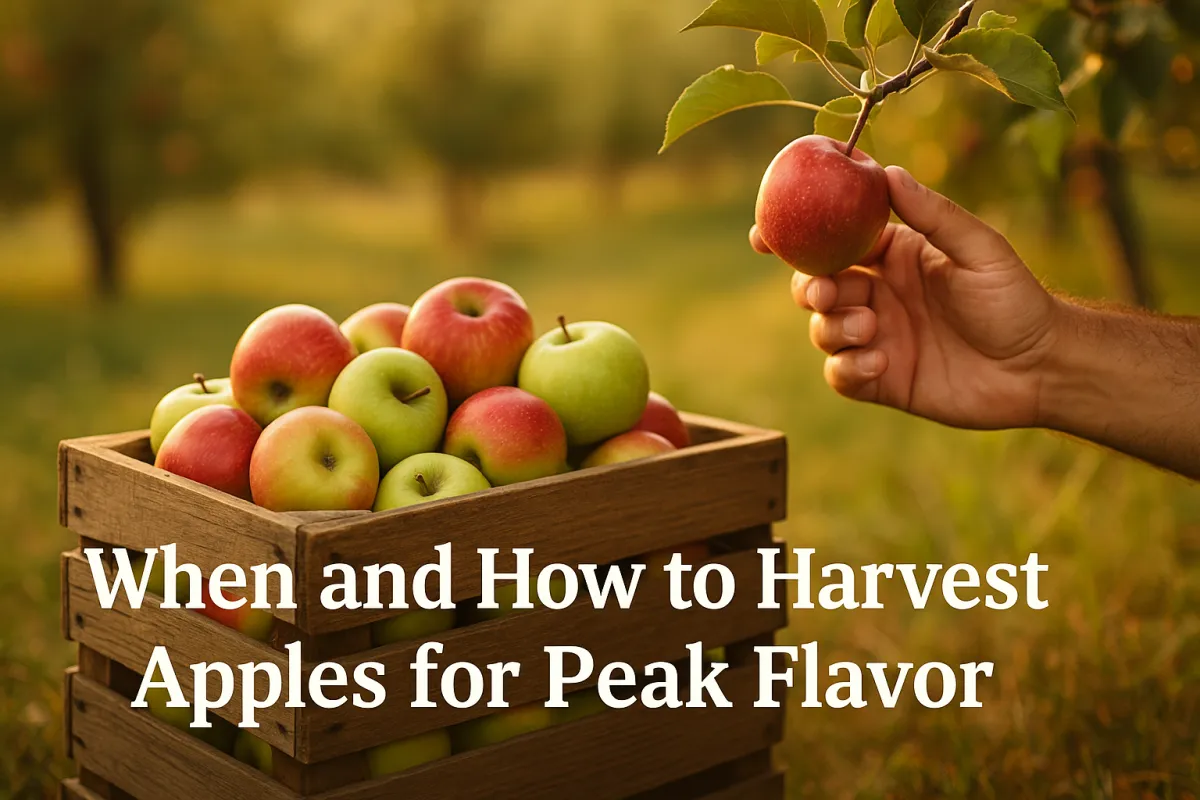
When and How to Harvest Apples for Peak Flavor
When and How to Harvest Apples for Peak Flavor
Intro: The First Time I Picked Too Early
I still remember the first year I thought I had my apple trees figured out. The fruit looked ready, so I hauled in a basket, filled it with shiny apples, and bit into the first one. Sour, mealy, and a letdown. That day taught me that harvesting apples isn’t about looks alone — it’s about timing and technique. Over the years, I’ve learned the difference between grabbing apples too early and harvesting them at their peak. Done right, those apples carry you well into winter with crisp flavor and rich sweetness.
How to Tell When Apples Are Ripe
Color and Firmness
A ripe apple will show more than surface shine. Look at the background color — it should shift from green toward yellow or gold depending on the variety. Firmness matters too, but don’t squeeze. Instead, cup the apple and give it a gentle press; a ripe apple holds solid without being rock-hard.
Seed Color Check
Cut one open. If the seeds are brown, you’re close to perfect ripeness. White seeds mean the apple isn’t ready yet. This is one of the most reliable checks, especially if you’re unsure.
The Twist Test: Clean Picking Without Damage
The best way to pick an apple is simple: lift and twist. A ripe apple should release cleanly into your hand. If you have to tug, it’s not ready. Pulling or yanking breaks the spur, which not only bruises the apple but also damages the bud that produces next year’s fruit.
Step-by-Step:
Cup the apple in your palm.
Gently lift upward while giving a small twist.
Let it drop naturally into your hand.
That’s it. Clean fruit, undamaged tree.
Timing by Variety
Early-Season Apples
These ripen in late summer (August into early September, depending on your USDA Zone). They’re usually softer, juicy, and excellent for fresh eating. The downside? They don’t store well. Enjoy them off the tree, make pies, or press cider — but don’t count on them lasting in storage.
Mid-to-Late Season Apples
Ripening from late September into October, these are your storage workhorses. Varieties like Fuji, Honeycrisp, and Granny Smith keep well into winter when harvested correctly. In colder zones (like 4–5), picking may push later into October. In warmer zones (6–7), ripening tends to come a week or two earlier.
Handling Apples the Right Way
Think of apples like eggs with skins. They bruise easily, and even a small bruise can spread rot in storage. Always handle them gently:
Keep stems attached — they seal the fruit.
Use baskets, crates, or padded containers rather than plastic bags.
Don’t stack apples too deep; the weight alone causes bruising.
Storing Apples for the Short and Long Haul
Short-Term (1–3 weeks)
If you’re just holding apples for quick eating, the fridge crisper or a cool cellar works fine. Keep them in perforated bags or with space for air to move.
Long-Term (months)
For storage into winter, conditions matter:
Temperature: 32–40°F is ideal.
Humidity: 90% keeps apples from shriveling.
Spacing: don’t let apples touch if possible; use trays, paper wrap, or shallow crates.
Varieties: Fuji, Granny Smith, and Honeycrisp are known keepers.
Pro Tip: Never store apples with onions, garlic, or potatoes. Apples release ethylene gas, which speeds spoilage, and they also pick up smells easily.
Grandma’s Tip
Grandma always said: “Pick with care, store with air — crowding apples spoils the barrel.” I didn’t believe her until I lost half a bushel one year from stacking them too tight. She was right, as usual.
Pro Tips & Mistakes to Avoid
Don’t wash before storage. Moisture encourages rot. Wash right before eating instead.
Use bruised apples first. A single damaged apple really can ruin the rest.
Check stored apples often. A 5-minute check every week saves months of fruit.
Faith Tie-In
Harvesting apples always reminds me of Ecclesiastes 3:1: “To everything there is a season, a time for every purpose under heaven.” Apples don’t care about our impatience. They ripen when it’s their time — and waiting for that season is always rewarded.
Closing & Next Step
Harvesting apples isn’t complicated, but it does take attention. Look for color, check the seeds, do the twist test, and handle them like treasures. Do it right, and you’ll enjoy crisp apples straight into winter.
👉 To make it easy, I’ve put together an Apple Harvest & Storage Checklist you can download and keep in your barn or kitchen. It’ll walk you step by step, from checking ripeness to setting up your storage crates.


Facebook
Instagram
X
Youtube